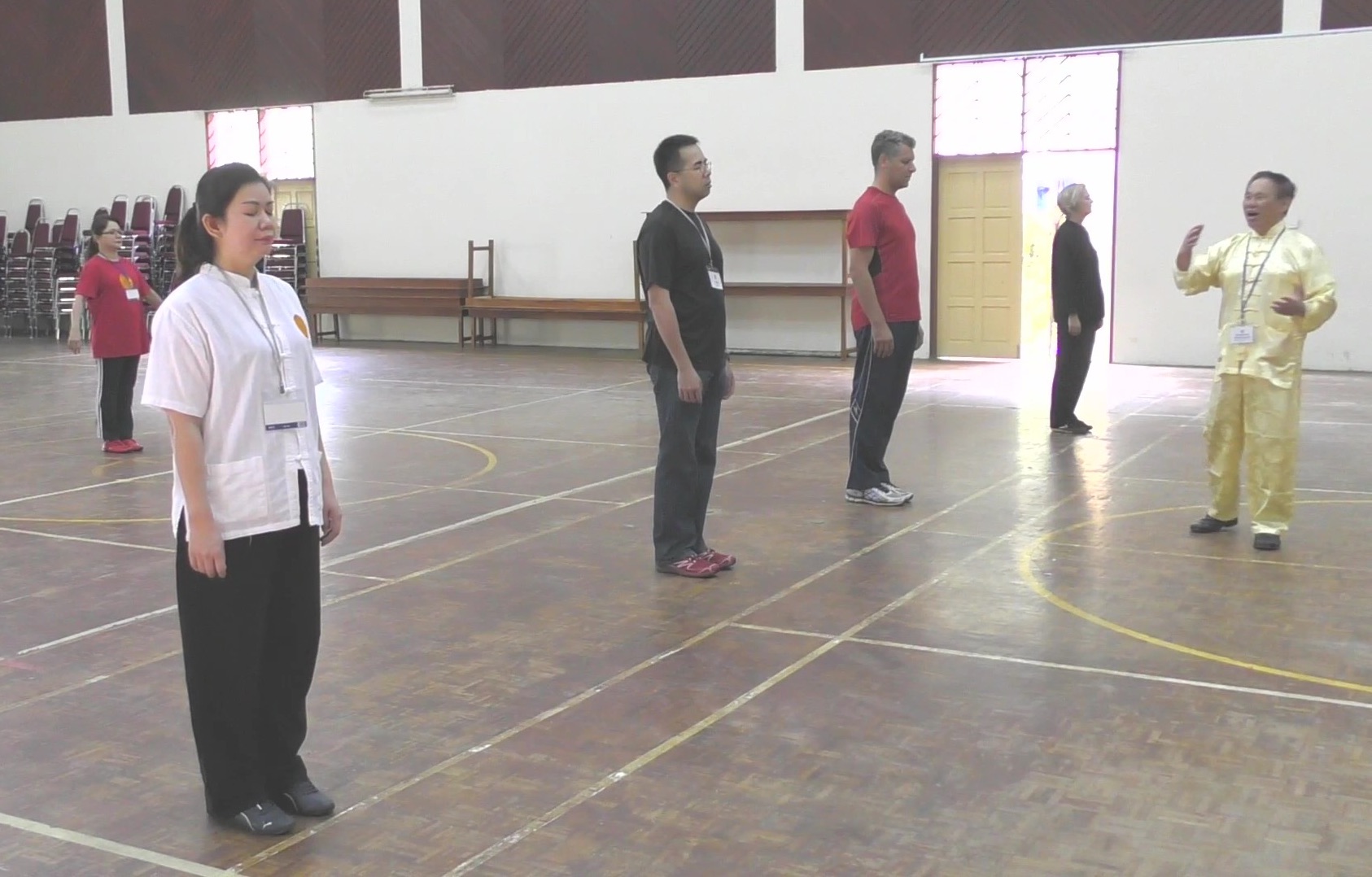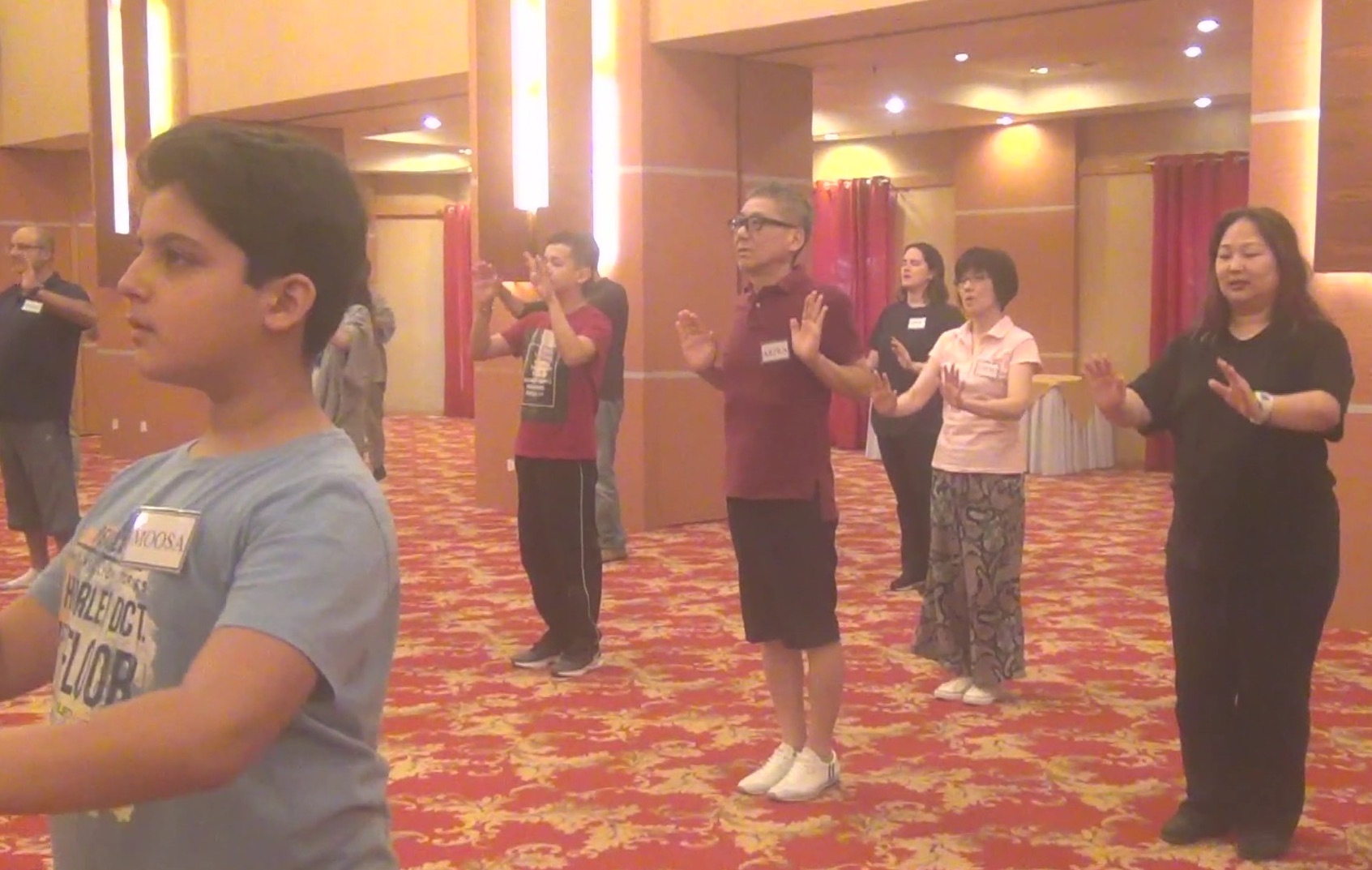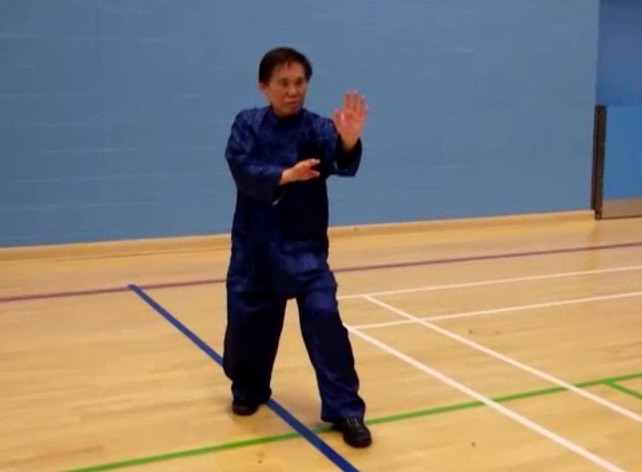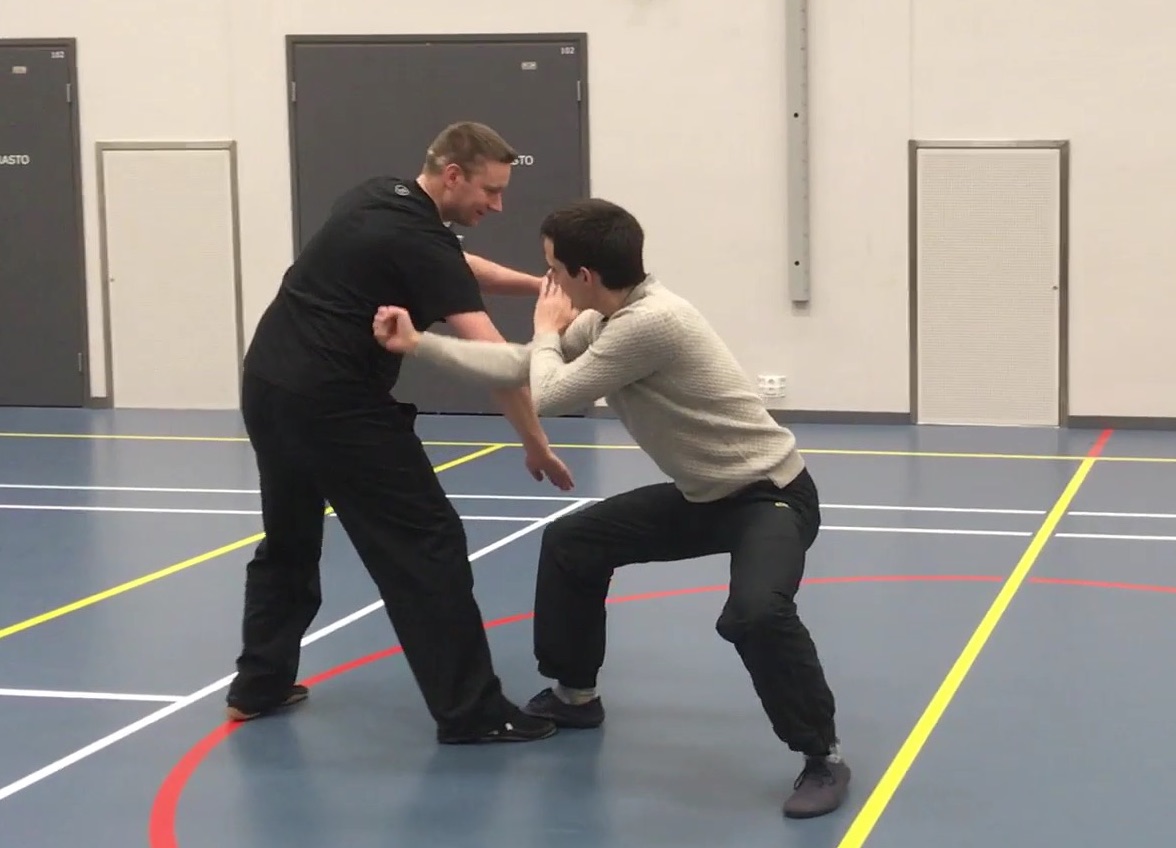SELECTION OF QUESTIONS AND ANSWERS
APRIL 2019 PART 3

The person sending blessings is more blessed than the person receiving them
Question 1
Regarding sending blessings to someone, how is it different from sending chi? Is it a matter of intention?
— Sifu Angel Perez, Shaolin Wahnam Puerto Rico
Answer
Sending blessings and sending chi to someone are technically the same. It is a matter of intention. Actually, everyone has this ability, because the whole world is made of chi, or energy, and blessings as well as chi can travel along this world of chi.
However, in our phenomenal world, almost everyone has lost this ability. They are distracted by myriad thoughts. It is only when we have attained a Zen mind, i.e. a mind free of thoughts, can we regain this ability.
Question 2
In my case I always send chi or blessings out of my best heartfelt intentions of well-being for the other. I understand that regarding health, like in the case of my girlfriend's son, he must agree to receive such energy in order for it to really work. I understand that his heart has to be open to the possibility of health, which shall be his natural state, provided everything is in its proper order within himself.
Answer
In our phen0menal world, intention is very important. It is very important that our sending out of chi or blessings must be born out of our best heartfelt intentions of well-being for the other person. If the intention is bad, it will only boomerang back to the evil-intentioned person. It is a karmic law.
If the other person knows that chi or blessings are being sent to him, it will be more effective as his heart will be open to receive the chi or blessings. If his heart is close, the chi or blessings may or may not reach him.
It is wonderful that you know that good health is natural. So many people are sick or stressful today that they think, wrongly, that illness is natural. It may be usual to them, but it is certainly not natural. If all their cells, organs and systems are working the way they are meant to, they will not be sick.
More significantly for many people, it means that any illness can be cured. This, in fact, is the philosophy of traditional Chinese medicine. However, this is different from all sick patients can be cured. It is therefore important that one should practice chi kung, the art of maintaining good health, when he is healthy.

Intensive Chi Kung Course 2017 Penang
Question 3
But what about sending blessings to him or anyone for that matter? Can such blessings reach and benefit him if he's not aware of such blessings directed to him? How does sending blessings to someone really work in reality for the one sending them and the one receiving them?
Answer
In theory everyone can send blessings to anyone else, but in practice only very, very few people can do so.
In theory, the blessings can reach and benefit the one sent to, even when he is not aware of such blessings directed to him. In practice he may or may not receive the blessings and benefit depending on various factors, like how strong the sending is, and how close his heart is.
Sending blessings is good for the person sending them. The person receiving may or may not receive the blessings and benefit.
Often I do not send blessings to those who do not ask for them. It is because of ethics. I believe in free choice. It is a person's life, and he is free to live it the way he wants. It is not right of me to force the blessings upon him.
Secondly, it is a matter of speaking from the position of strength. If someone does not want the blessings, from the position of strength, we should not send the blessings to him.
However, this is different from sending blessings to all people in general, wishing them to have peace and happiness. Due to various factors that operate in the phenomenal world, like karmic forces, those who have done evil will not have peace and happiness despite other people sending blessings to them. Most other people will be peaceful and happy, due much to people sending blessings.
The two factors -- ethics and position of strength -- apply to sending chi, except that these two factors are stronger. I do not usually send chi to people who do not ask for it.
Question 4
I first wrote to you almost twenty years ago, and I smiled when I found my old email in your archives.
Back then, I practiced from your books. In three months, my badly acne-scarred face became smooth and unmarked. In another three months, my eye power decreased by minus 1.50 diopters, which baffled my optician. While these physical results were amazing, what benefited me more was emotionally changing from an angry young man to a more joyful one.
It was wonderful to finally meet and learn from you in Penang last July in the Intensive Chi Kung Course. Thank you for your advice on how to improve my Santi Shi.
— Max, Malaysia
Answer
It is great to hear from you and to know that you have benefited much from your practice. Keep up your excellent work. You will find incredible benefits.

Santi Shi or Three-Body Poise
Question 5
I started practicing Xingyiquan a year ago. Most of my personal practice has been on Santi Shi.
I start by entering silence. I then perform rotating knees and deep knee bending. These two patterns get me gently swaying. I then sit in Santi Shi for about 5 minutes on each side. I think of nothing while in Santi Shi. Halfway through each side, I do correspondence mode immediately followed by expansion mode. I end the session with a few minutes of standing meditation.
My front palm recently started to feel full, vibrating, and feels like exploding. It feels amazing! I notice that if I stand thinking of nothing (without any mode), my palm feels full until the end of the session. But after doing correspondence mode, my front palm slowly stops vibrating and goes back to feeling normal. So, I'm unsure if I'm practicing the correspondence/expansion modes in the correct sequence and timing.
Should I do correspondence and expansion together during the same session? Should I do it at the beginning, middle or end of the session? Do I think just once to activate correspondence/expansion or do I keep thinking continuously throughout the session? Should I increase the length of my session?
Answer
Although you have practiced Xingyiquan for only a year, I am sure your attainment in Xingyiquan is better than many of your classmates who have practiced for many years. The Santi Shi, or Three-Body Poise, is fundamental in Xingyiquan. You will have a lot of benefits from it, and some of the benefits you may not have thought possible before.
The Correspondence mode and the Expansion mode are great. They are secrets of Xingyiquan. What you did was correct.
Without seeing your practice, it is difficult to tell whether you practiced the Correspondence mode and the Expansion mode correctly. But a general indication is how you feel after your practice. If you feel well, you are doing fine. If you feel badly, you should review your practice.
The disappearance of vibration of your front palm in Santi Shi could be due to a few factors. It could be due to wrong practice, or it could be due to your being familiar with the full force, thus the disappearance of the vibration.
You can perform the Correspondence mode and the Expansion mode in any way you like. The important thing is to perform the modes correctly, and not to over-train.
You need not keep thinking continuously throughout the session. Just activate the Correspondence mode or the Expansion mode. If you feel the mode has become faint, you can think of the mode again.
Yes, you should increase the length of your session. But you must not force yourself. Enjoy your practice.
Rotating your knees makes them flexible and agile. You can remove it from your regular practice, but perform the rotation once a while.
Question 6
I was recently practicing beng quan when I felt a light jolt of electric from my upper forearm to the base of my thumb as I punched. This was unlike any chi sensation I felt before! Every punch I threw that day had that light electric jolt. However, this only happened twice in the last two months and I can't repeat it consciously. Do you have any advice on what happened and how I can feel it again?
Answer
The light jolt of electricity when you practiced "beng quan", or "crushing fist", was due to your energy flow. It showed progress.
But you should let it pass, and not abide by it. When your energy flow is smooth and a lot, you may not feel the electric jolt. The flow has become normal for you.

Beng Quan or Crushing Fist
Question 7
I feel my front knee is horribly exposed to a leg-breaking stomp.
Answer
There are a few counters against the leg-breaking stomp.
You may move forward from your Unicorn Step or any stance, thus avoiding the stomp, and simultaneously strike the face of the opponent.
Or you may lift up your leg as your opponent stomps, and immediately step on the stomping leg, thus breaking it.
Or as the opponent stomps, you shift your leg and then kick at the knee of the stomping leg.
Question 8
One point you emphasize is that kungfu must be able to be used for fighting. I wanted to test myself after a year of training. So last week I asked to spar a friend ten years younger than me who was a boxer for a state.
He got in a couple of good blows to my body but I was happy I could deflect most of his fast attacks with heng quan (or diagonal fist). I also managed to smash right through his parries a couple of times with beng quan (or crushing fist). And he was completely baffled by the upward/downward angle of pi quan (or palm strike).
There was also an instance when he swung a left uppercut to my body and I instinctively chopped down my leading left palm with a pi quan. It was not a good counter.
To my complete surprise, the counter ended the sparring. My friend let out a yelp and jumped back holding his arm. He shouted "Control la!" The flat of my palm (not the knife edge, not even the heel) landed on the upper side of his elbow. I was bewildered that the soft part of my palm, traveling a short distance, could cause so much pain.
Overall, I was happy I could use some of my kungfu techniques in my test. However, the test also exposed a lot of my weaknesses.
Answer
Congratulations for your success in testing yourself against an experienced Boxer. He must be very surprised at your sparring performance.
Much of the internal force in causing him pain came from your training of the Santi Shi (or Three-Body Poise).
It was only your first test. Eventually as you learn more from your own weaknesses, you will find you can beat your opponent quite easily.
LINKS
Selected Reading
- Blessings by Grandmaster Ho Fatt Nam and other Divine Beings
- Distant Chi Transmission is Unbelievable but True
- Wu Hua Pao or Five-Flower Cannon
- We are Now Living in a Golden Age
- Across the Apalachain
